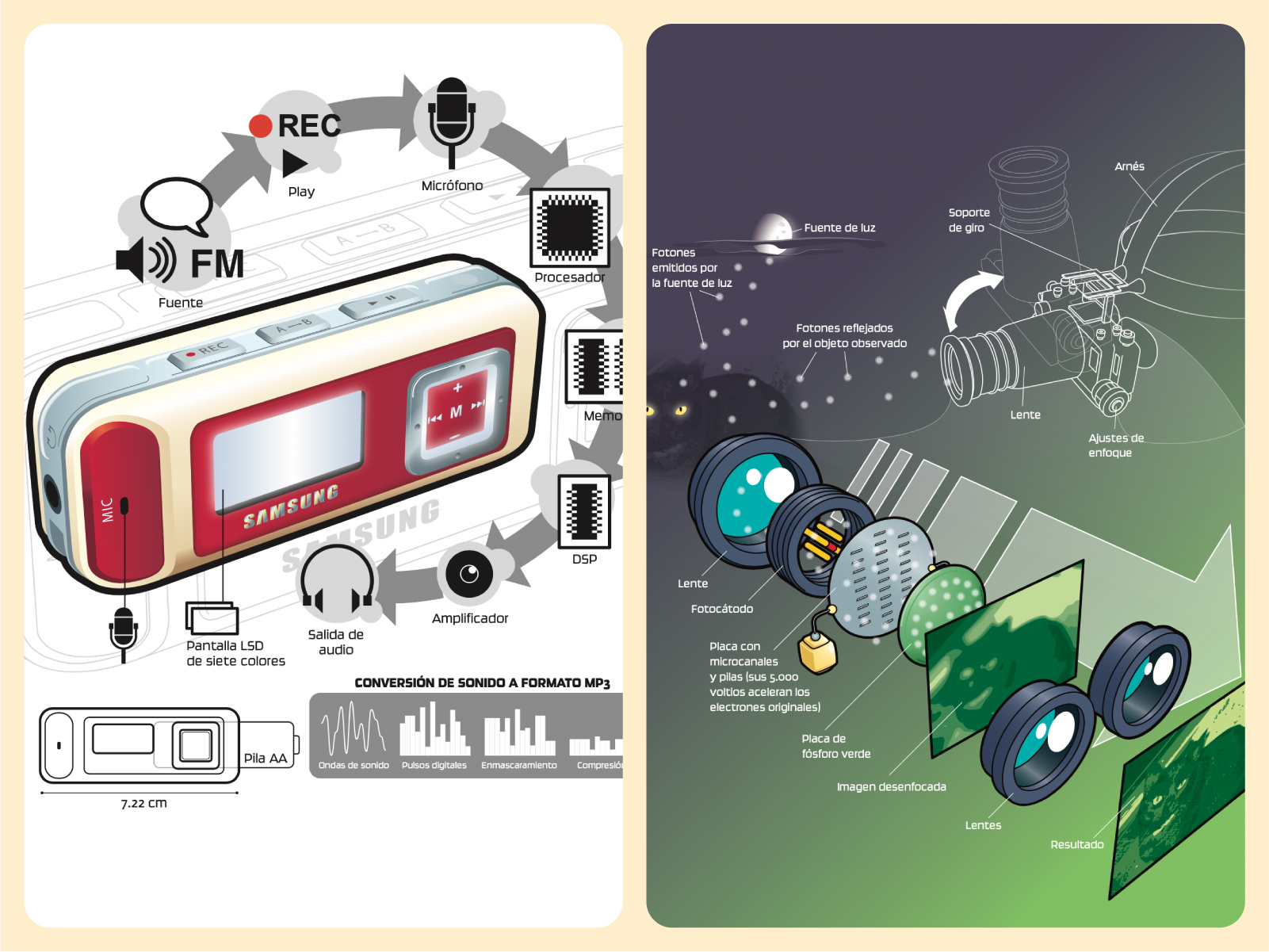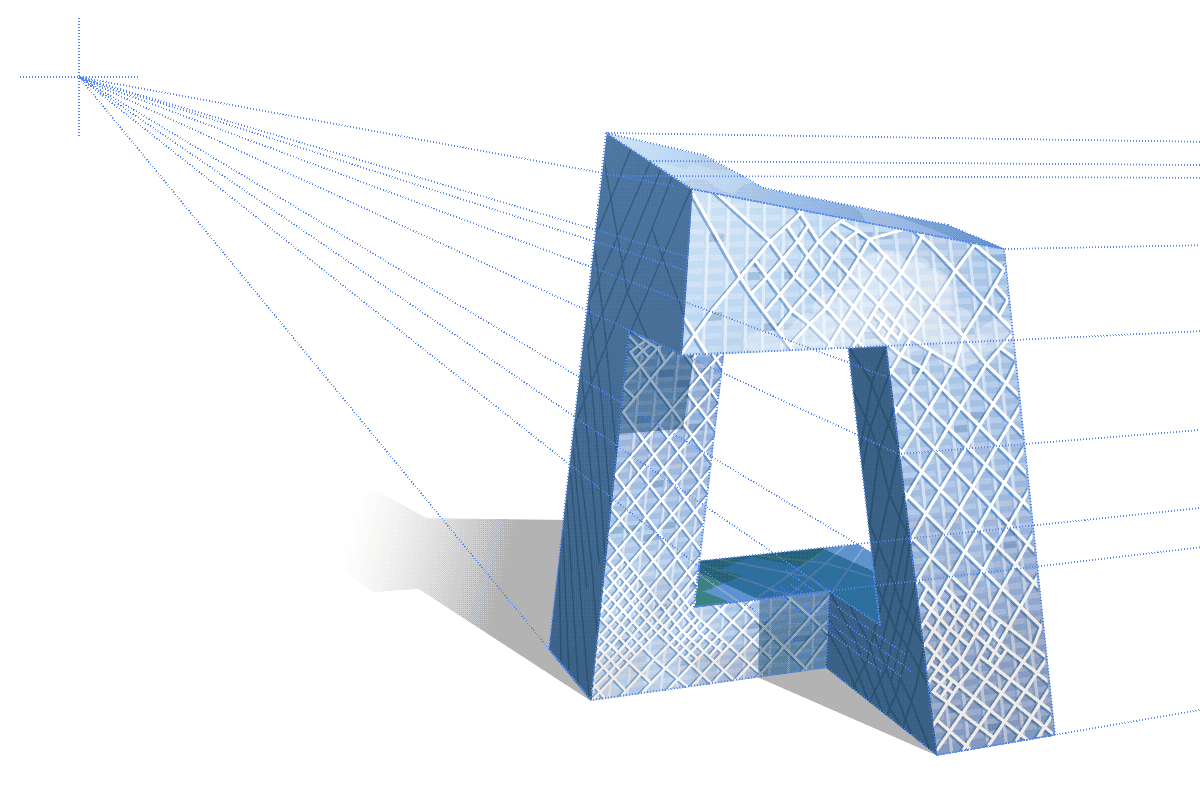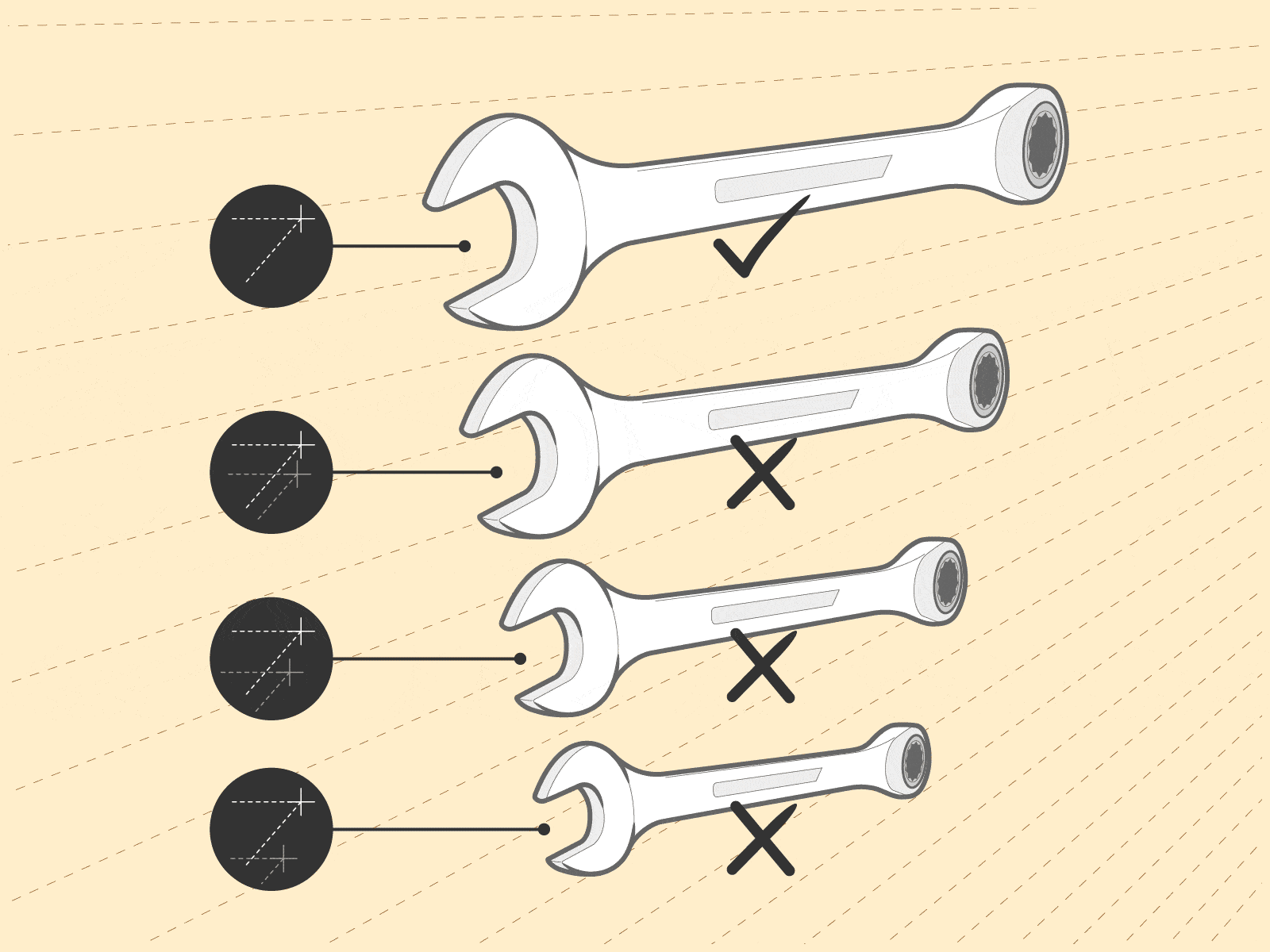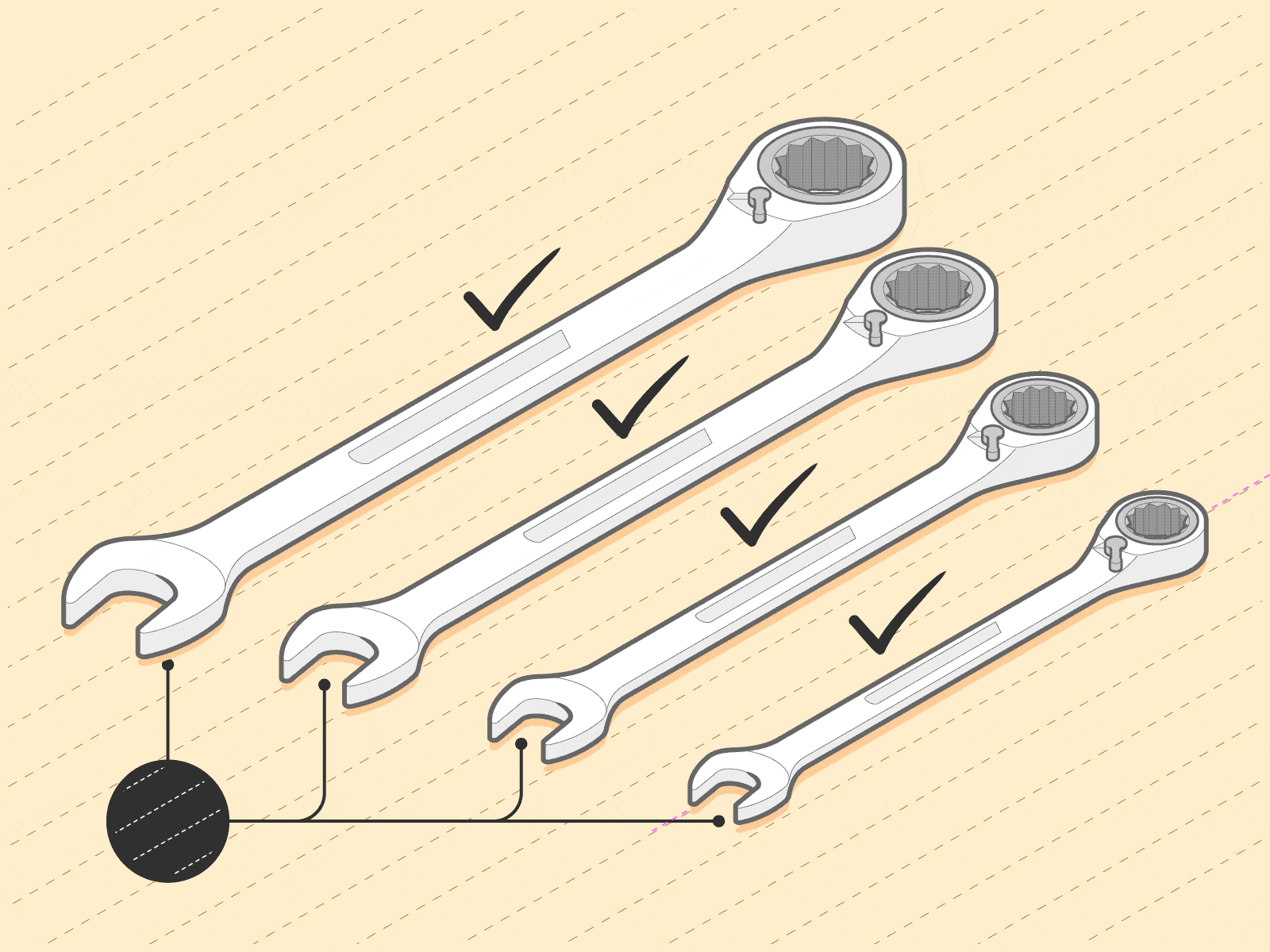
The workload varied, but I usually did 3 to 5 monthly collaborations. Each one took a week to make, so I used to spend the entire month thinking about ways to work out an illustration or infographic.

How to simplify so much work?
It was definitely a lot of work.
At that point, I became obsessed with finding ways to make my process more efficient. Vectors were very useful for this, but there had to be a way to simplify, systematize and save energy in the elaboration of vector shapes.
My first illustrations had no particular grid; each one had its own perspective, with two, even three vanishing points. The problem was that they could hardly be reused in the same or other projects.

Isometric projection was here to stay
I started using the isometric grid in mid-2005, mainly to explore that style of illustration, which I had always liked. I quickly realized that it allowed me to generate elements with a uniform structure and reuse them over and over.
An example: the following illustration of a wrench, which I made starting from a vanishing point.

Nice, isn’t it? But there is a problem: if I wanted to reuse the lines of this wrench in the same project… then it doesn’t look so good anymore.

To correct this, a second wrench would have to be drawn from the vanishing point of the first; that is, all the necessary wrenches would have to be drawn again, with a common vanishing point.
Similarly, if I wanted to reuse the lines of the wrench in a new project, it would need to have the exact same vanishing point, located in the same position as the previous wrench. In other words, the new work would have to adjust to a framing and perspective that were randomly determined in a previous, unrelated work.
That simply makes no sense, so in order for the wrench to fit, I would have to trace it with the perspective of the new project, completely ruling out the possibility of reusing the lines from the first wrench.
Alternatively, if the same wrench had no perspective whatsoever and was done in an isometric grid (like the following):

Then we definitely would be able to use the same lines, as many times as we wanted, in the same project or in other contexts, as long as they were also done in an isometric grid. Sure, small adjustments would be necessary, but it would take a lot less time and effort than drawing the wrench from scratch again and again.

Over time, I polished and perfected my technique to work my illustrations in an isometric space, until I was able to systematize the different processes that I use to draw and create figures, to such an extent that isometric projection has been a hallmark of my work for years now.
What do you think? Has a process improvement ever impacted your work style?
Thanks for reading and sharing.
Francisco GyG
Translation: Aron Covaliu.



0 comentarios